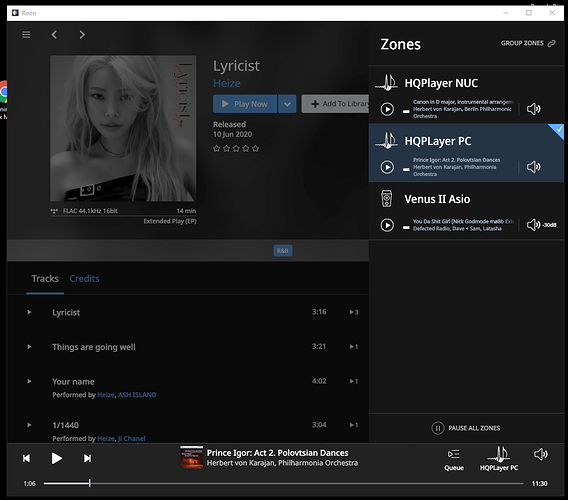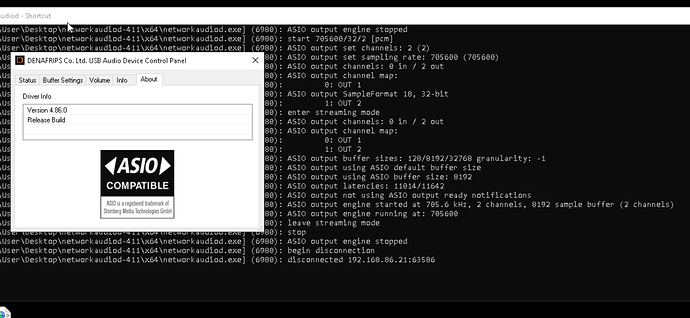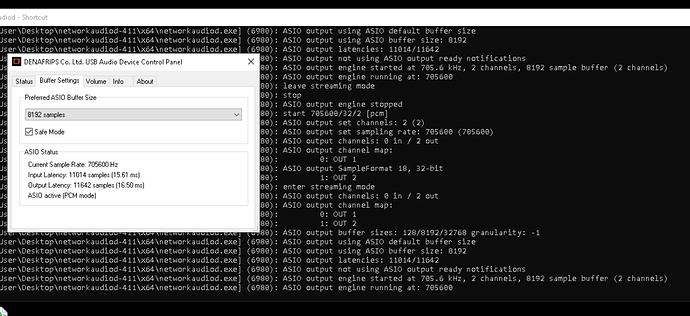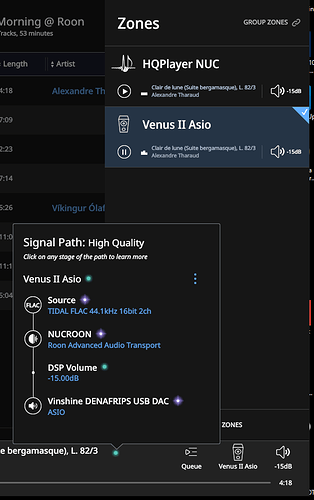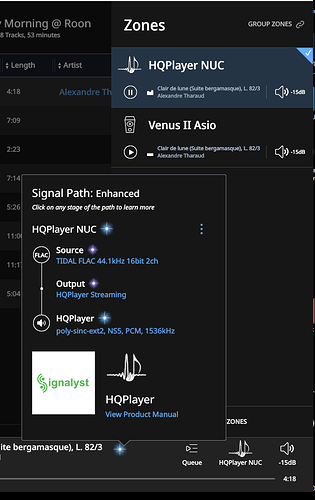I meant Sound Quality
Dirk
Yes, and my response was totally about SQ, perhaps let me update so it will be clearer.
Hi Daniel
You do not have to convince me of the sound quality offered by HQPlayer. I am big fan myself.
My question was directo to Marcos, if he is experiencing a difference in sound quality, with the ASIO output disabled.
I still believe his setup is not really straightforward.
In his place, but who am I, i would connect the dac to the HQPlayer PC and go from Tidal to Roon to HQPlayer to Denafrips dac in one straight direction.
Dirk
Jussi,
How can I check I have runnig & using the proper HQP drivers?
You mentioned there should be a driver conflict with Denafrips but that does not seem to be happening as I can switch from HQP to the Denafrips DAC with no conflicts.
Thank you.
Perhaps should edit your title to read
Why can I not hear the difference: DSD256 vs 44/16?
Thanks for trying out.
Sorry for you that your investment in HQPlayer is not delivering what you expected.
But thanks again, as I have learnt quite a bit about/around the technical setup and process of HQPlayer NAA.
Dirk
If the performance was recorded at 16bit/44.1kHz, which has been by far the most common commercial format for decades, then DSD256 will disclose nothing more of the source material. Do you you know the format of the original recording?
That is a really bad assumption because it is inaccurate. Almost all (probably all) commercial digital recordings are recorded at a higher rate than CD.
You’ve set up a strawman. I made no such assumption.
Marcos was referring to a recording of the Allegretto from Beethoven’s Moonlight Sonata, though he doesn’t say which recording he was using as a test. There are dozens upon dozens of performances currently available, many of them recorded decades ago. That’s why I asked him whether he knew how the performance he used was originally recorded.
You certainly implied that which is why i inferred what I inferred. Nothing is recorded at 16/44.1…
networkaudiod prints out what is going on, start of playback etc.
It depends on the driver, but generally it shouldn’t work because both applications try to gain exclusive control of the DAC and both cannot have it. So most of the time it makes things fail in strange ways.
This is not about source formats, but about how the D/A converter performs with different input formats.
Jussi,
Does this mean that HQP uses the Denafrips ASIO driver?
Is it supposed to be using another driver?
Thank you.
Hi, maybe the source details I am using were not clear , so here it goes 
It is 44/16 quality streamed from Tidal / Roon / NUC to USB DAC:
NO UPSAMPLING
UPSAMPING to 1.536M / 24 / 2 HQPlayer / NUC to USB DAC:
To me NO UPSAMPLING and UPSAMPLING sound the same.
Should they?
Well, first I wouldn’t test this by using a Tidal source. I’d use a local CD Rip. Tidal’s SQ has to me been slipping totally for the past couple of months.
Second, how HQPlayer sounds is changed by the type filters and dither chosen. Each setting sounds different. What one person finds great, another might not.
Here are what I use:
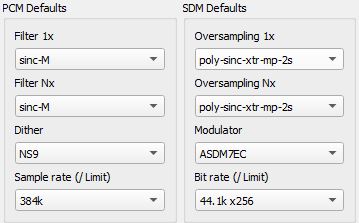
Thank you!
Just noting that the settings Daniel is using are quite demanding. As he mentioned above, you may have to drop down to DSD128. You could also try the ext2 filter (which I like) and the DSD5EC modulators which are less intensive.
Oversampling itself shouldn’t have a sound, it just provides more “blank space” for different filters or modulators to be used. The differences between filters can be subtle and consist of different trade offs between transient response, high frequency roll off, rejection depth, and phase/frequency response.
Having said that, I find PCM to be a more immediate, dynamic sound and DSD to be wider with better resolution of instruments.
As a rough approximation, longer filters can have wider soundstage and shorter ones a better transient response. Jussi has mentioned that ext2 surprised him as it has better sounding transients than might be expected from a longer filter.
I am surprised that no one has commented on the DSP volume being active? Why even bother upsampling and tweak while using software volume control?
IMO thats more destructive than any upsampling algorithm can counter balance.
Looks correct and seems to be playing as well. So if it works in parallel with Roon you are lucky.
But as stated here, the same device shouldn’t be enabled in both:
